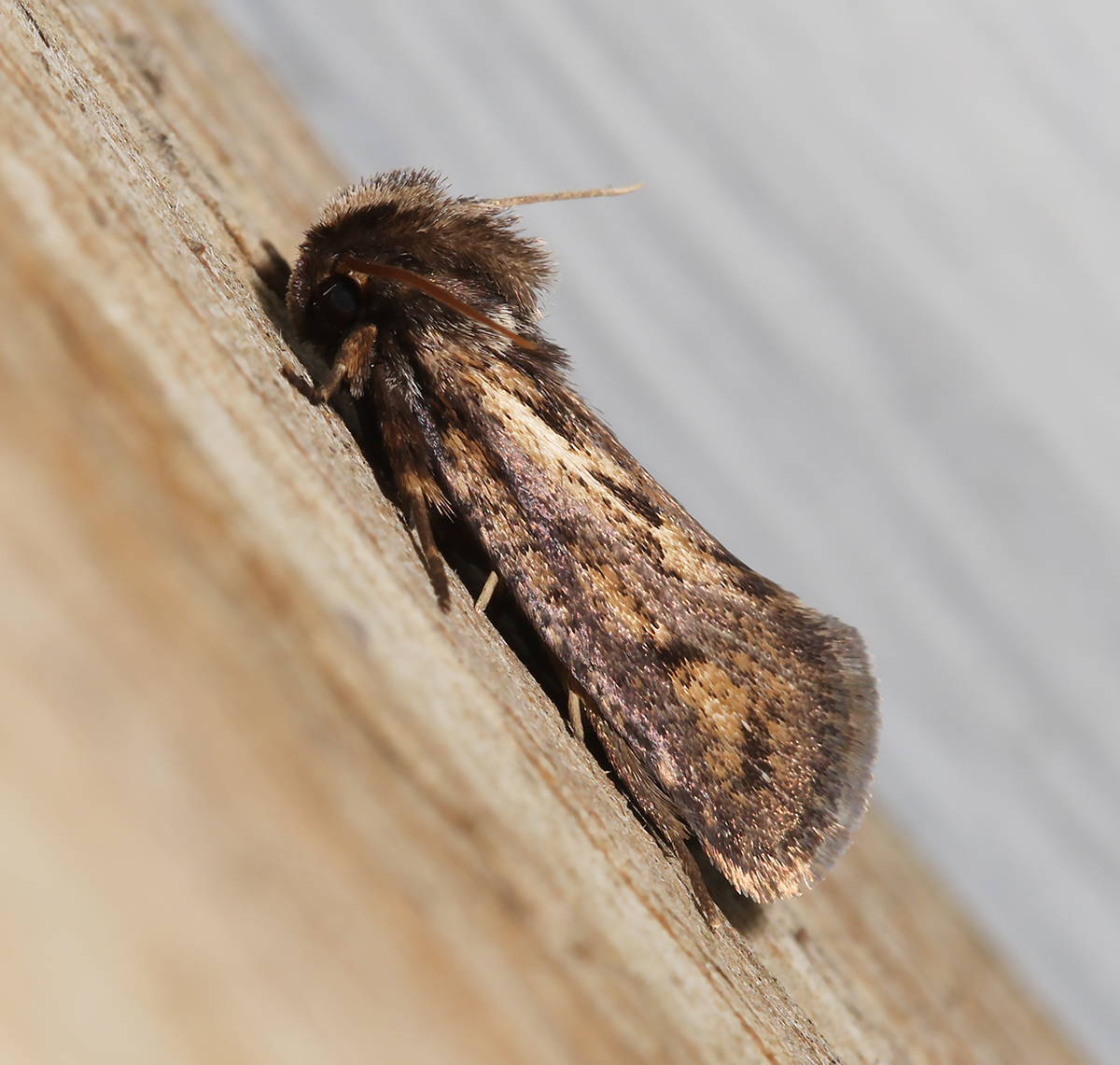Clemens' Grass Tubeworm Moth - larval foodplant and abundance
This post is about a very small moth (barely over half an inch long) with the elongated shape and furry-headed look of the tubeworm moths (genus Acrolophus). The particular species here is one with an English name longer than the moth itself, Clemens’s Grass Tubeworm Moth (Acrolophus popeanella). It seems to be the most numerous of the several species in the genus in eastern North America. It is certainly very common at our place near Oak Harbor, Ottawa County, northwest Ohio. I see a few essentially every night here in mid to late summer. On the night of August 10, 2021, at a small light out in front of the house, 13 of the 17 moths attracted were of this one species.

Larvae of the tubeworm moths don’t seem to be well known. Reportedly they make silken tubes in the soil (hence the group name) and feed on roots and detritus at ground level. Clemens’s Grass Tubeworm Moth has been known for many years to feed on the roots of Red Clover (Trifolium pratense), although at least one source mentions the possibility of White Clover (Trifolium repens) also.
A couple of thoughts:
- Red Clover is moderately common in our county, but I don’t know of any growing close to our house. I went out and searched specifically the other day, and couldn’t find any. But White Clover is super abundant in our yard and in all the ditches and roadsides near here. Since these moths don’t seem to be strong fliers, I suspect the ones we see are coming from very nearby, and I suspect they are using the roots of White Clover as their larval food plant.
- Red Clover and White Clover are not native to North America—they were brought here from Europe and Asia. But Clemens’s Grass Tubeworm Moth is native. Presumably its larvae used to feed on the roots of native clovers (there are a number of species) before these alien species were introduced. I suspect that the moth made the transition to feeding on these abundant non-native clovers and that as a result, it has become more numerous today than it ever could have been historically. A similar thing has happened with other species. For example, the Wild Indigo Duskywing (Erynnis baptisiae) became much more widespread and abundant after it made the jump from Wild Indigo (Baptisia) to the introduced, invasive Crown Vetch (Securigera varia).
This is all conjecture, but I’d be interested to hear what others think about this.


 Usá ArgentiNat con app iNaturalist
Usá ArgentiNat con app iNaturalist





